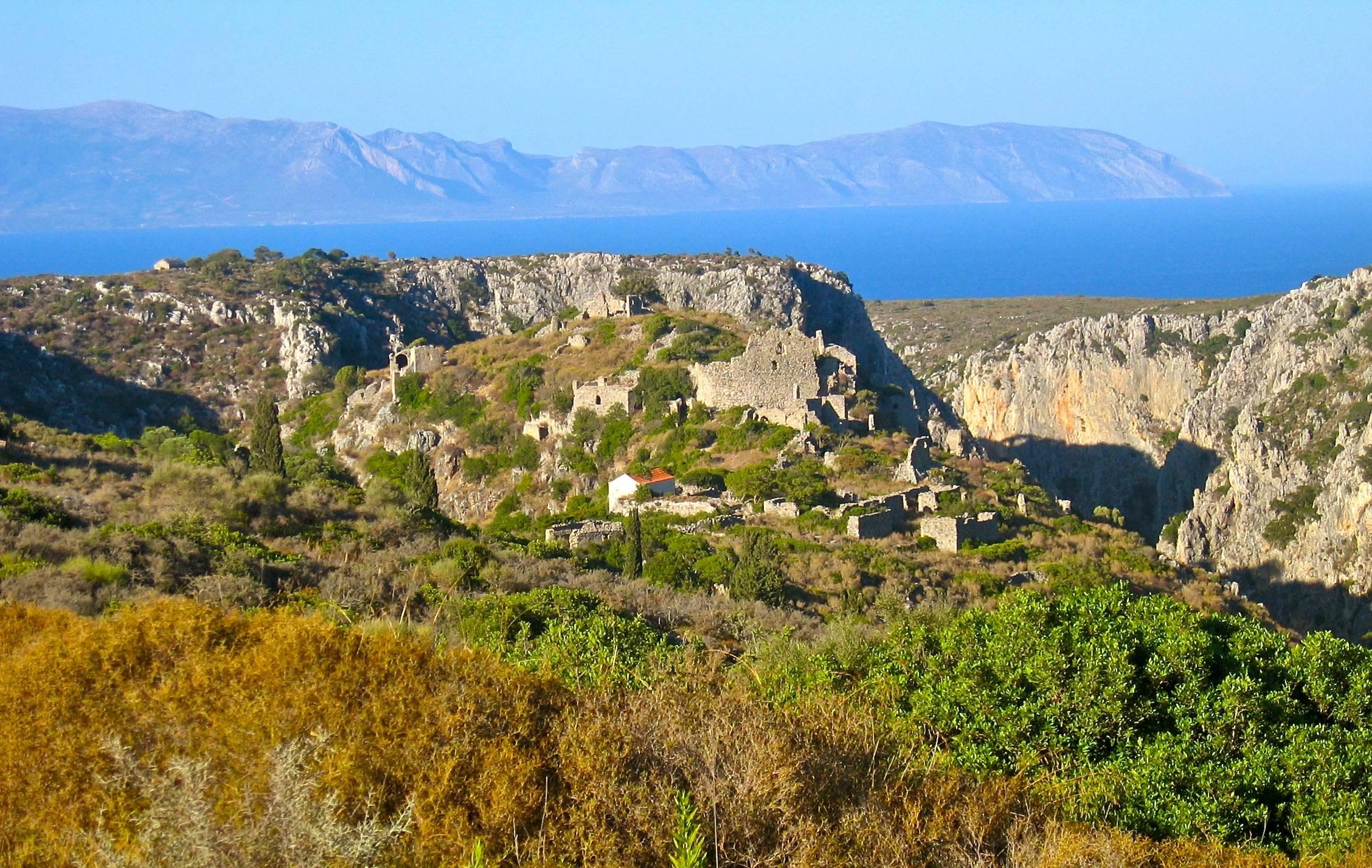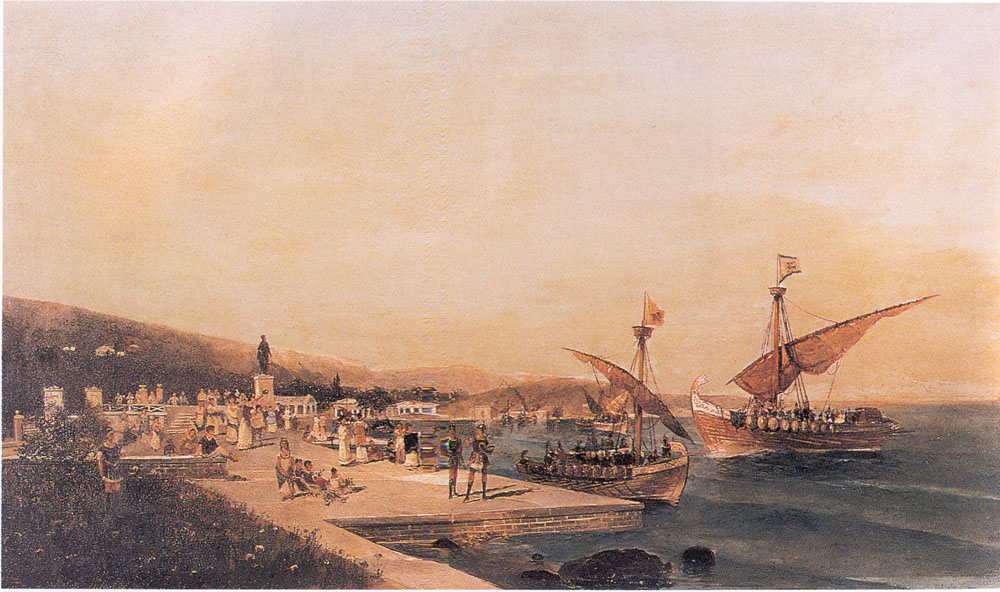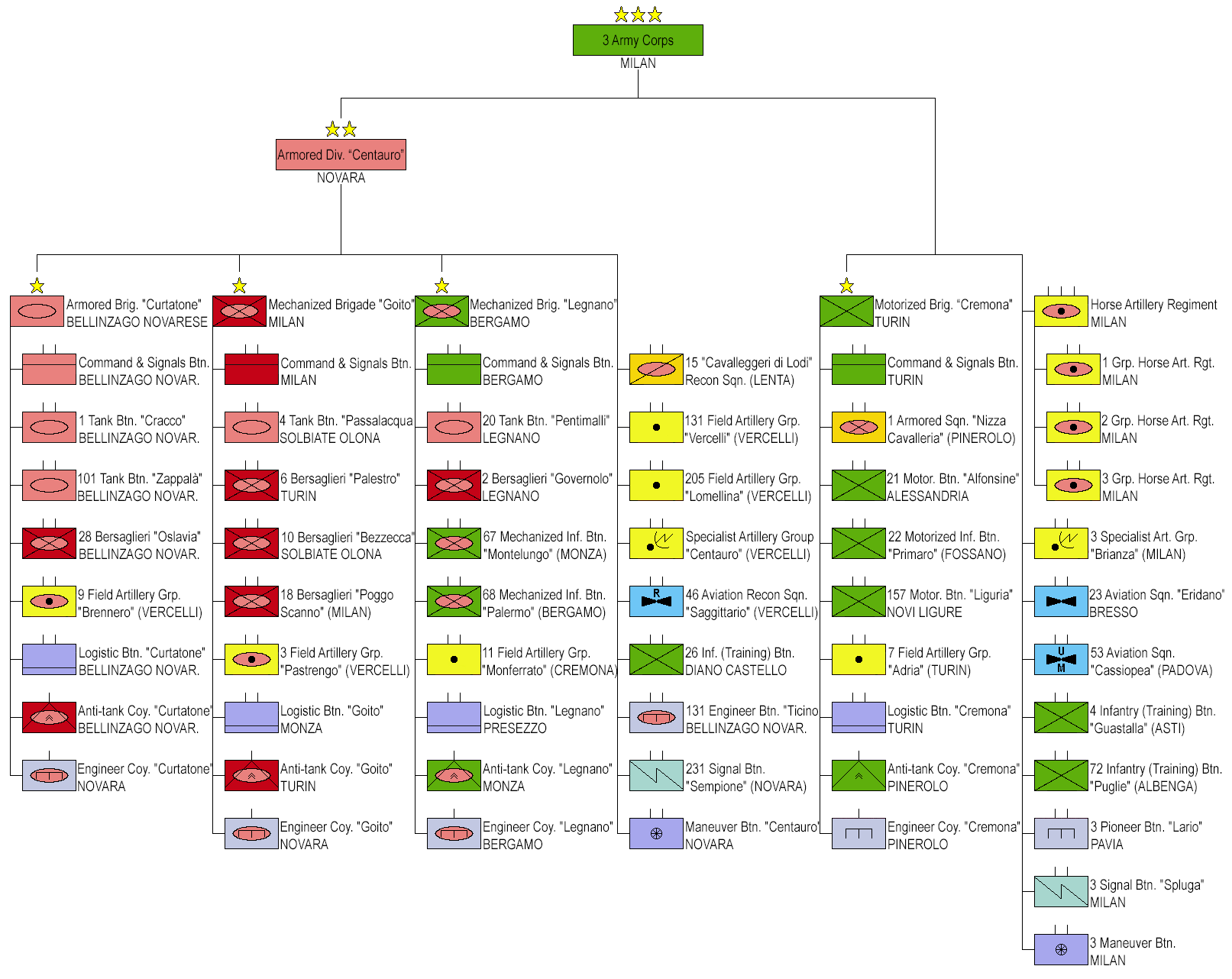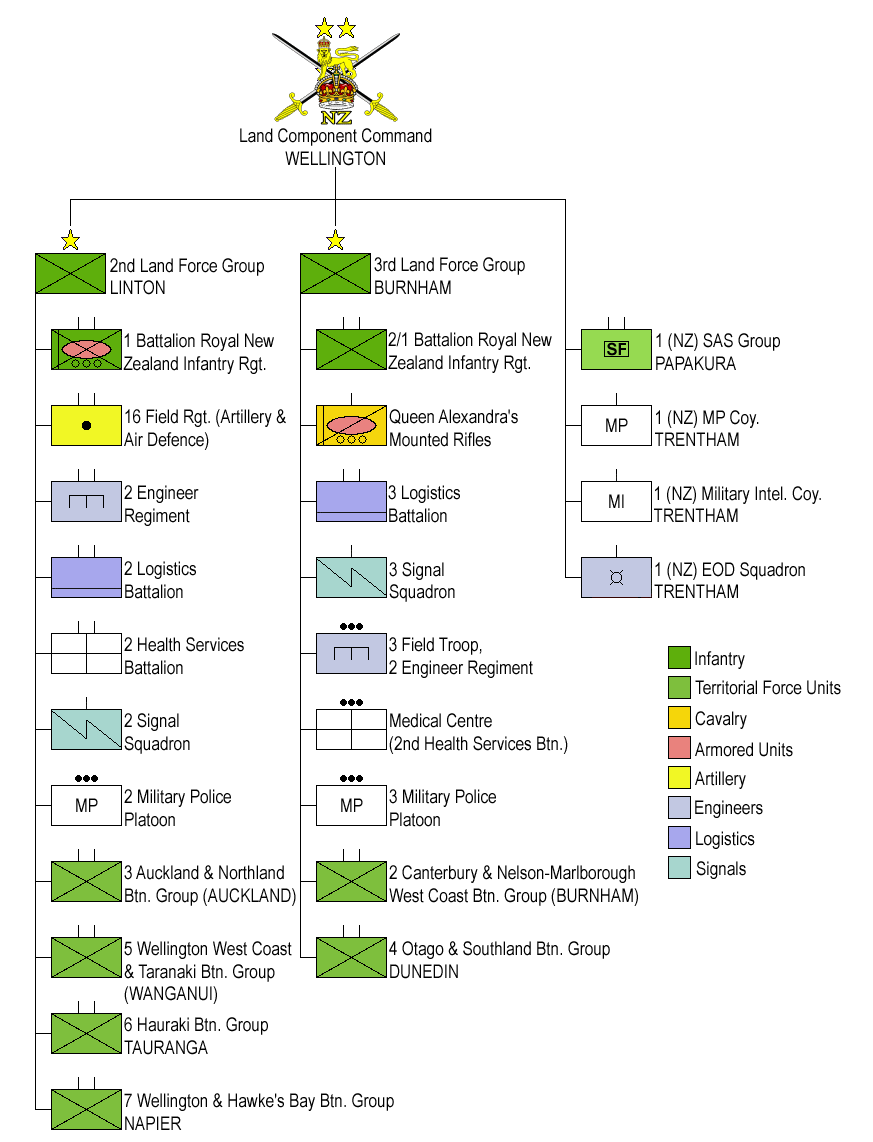|
Eleventh Army (Italy)
The 11th Army ( it, 11ª Armata) was a World War II field army of the Royal Italian Army. It was formed in November 1940 for service in the Greco-Italian War, and after the German invasion of Greece and the capitulation of that country in April 1941, assumed occupation duties in the Greek mainland. It remained on station in Greece until the Armistice of Cassibile on 8 September 1943, when it was forcibly disbanded by the Germans. History It was formed on 9 November 1940 out of the 11th Army Corps, then based in Italian-occupied Albania and engaged in operations against Greece alongside the 9th Army. Its engagement against the Greeks lasted until the fall of Greece in April 1941. Occupation of Greece Thereafter, the Eleventh Army assumed duties of occupation in Greece, headquartered in Athens. Its command also doubled as the Higher Armed Forces Command Greece (''Comando Superiore Forze Armate Grecia'', abbrev. ''C.S. FF. AA. Grecia''), with responsibility over mainland Greece ... [...More Info...] [...Related Items...] OR: [Wikipedia] [Google] [Baidu] |
Field Army
A field army (or numbered army or simply army) is a military formation in many armed forces, composed of two or more corps and may be subordinate to an army group. Likewise, air armies are equivalent formation within some air forces, and within a navy the comparable notion is that of a fleet. A field army is composed of 300,000 to 600,000 troops. History Specific field armies are usually named or numbered to distinguish them from "army" in the sense of an entire national land military force. In English, the typical orthographic style for writing out the names field armies is word numbers, such as "First Army"; whereas corps are usually distinguished by Roman numerals (e.g. I Corps) and subordinate formations with ordinal numbers (e.g. 1st Division). A field army may be given a geographical name in addition to or as an alternative to a numerical name, such as the British Army of the Rhine, Army of the Potomac, Army of the Niemen or Aegean Army (also known as the Fourth Army ... [...More Info...] [...Related Items...] OR: [Wikipedia] [Google] [Baidu] |
Kythera
Kythira (, ; el, Κύθηρα, , also transliterated as Cythera, Kythera and Kithira) is an island in Greece lying opposite the south-eastern tip of the Peloponnese peninsula. It is traditionally listed as one of the seven main Ionian Islands, although it is distant from the main group. Administratively, it belongs to the Islands regional unit, which is part of the Attica region, despite its distance from the Saronic Islands, around which the rest of Attica is centered. As a municipality, it includes the island of Antikythera to the south. The island is strategically located between the Greek mainland and Crete, and from ancient times until the mid 19th century was a crossroads of merchants, sailors, and conquerors. As such, it has had a long and varied history and has been influenced by many civilizations and cultures. This is reflected in its architecture (a blend of traditional, Aegean and Venetian elements), as well as the traditions and customs, influenced by centuries o ... [...More Info...] [...Related Items...] OR: [Wikipedia] [Google] [Baidu] |
Volos
Volos ( el, Βόλος ) is a coastal port city in Thessaly situated midway on the Greek mainland, about north of Athens and south of Thessaloniki. It is the sixth most populous city of Greece, and the capital of the Magnesia regional unit of the Thessaly Region. Volos is also the only outlet to the sea from Thessaly, the country's largest agricultural region. With a population of 144,449 (2011), the city is an important industrial centre, and its port provides a bridge between Europe and Asia. Volos is the newest of the Greek port cities, with a large proportion of modern buildings erected following catastrophic earthquakes in 1955. It includes the municipal units of Volos, Nea Ionia and Iolkos, as well as smaller suburban communities. The economy of the city is based on manufacturing, trade, services and tourism. Home to the University of Thessaly, the city also offers facilities for conferences, exhibitions and major sporting, cultural and scientific events. Volos parti ... [...More Info...] [...Related Items...] OR: [Wikipedia] [Google] [Baidu] |
III Army Corps (Italy)
The III Army Corps was one of three corps the Italian Army fielded during the Cold War The Cold War is a term commonly used to refer to a period of geopolitical tension between the United States and the Soviet Union and their respective allies, the Western Bloc and the Eastern Bloc. The term '' cold war'' is used because the .... Based in the regions of Lombardy and Piedmont the corps was the army's operational reserve, while the 4th Alpine Army Corps and the 5th Army Corps (Italy), 5th Army Corps, both based in the North East of Italy, were the army's front-line units. After the end of the Cold War the corps was reduced in size and on 1 December 2000 it ceded its last brigades to the 5th Army Corps (Italy), 1st Defence Forces Command (COMFOD 1°). The personnel of the 3rd Army Corps was used to raise the NATO Rapid Deployable Italian Corps in January 2001. History Origins The history of the 3rd Army Corps begins after the Second Italian War of Independence, second I ... [...More Info...] [...Related Items...] OR: [Wikipedia] [Google] [Baidu] |
Italian Capitulation
The Armistice of Cassibile was an armistice signed on 3 September 1943 and made public on 8 September between the Kingdom of Italy and the Allies during World War II. It was signed by Major General Walter Bedell Smith for the Allies and Brigade General Giuseppe Castellano for Italy at a conference of generals from both sides in an Allied military camp at Cassibile, in Sicily, which had recently been occupied by the Allies. The armistice was approved by both the Italian King Victor Emmanuel III and Marshal Badoglio, the Prime Minister of Italy at the time. Germany moved rapidly by freeing Benito Mussolini (12 September) and attacking Italian forces in Italy (8–19 September), southern France and the Balkans. The Italian forces were quickly defeated, and most of Italy was occupied by German troops, who established a puppet state, the Italian Social Republic. The king, the Italian government, and most of the navy escaped to territories occupied by the Allies. Backgroun ... [...More Info...] [...Related Items...] OR: [Wikipedia] [Google] [Baidu] |
German Army (Wehrmacht)
The German Army (, "army") is the land component of the armed forces of Federal Republic of Germany, Germany. The present-day German Army was founded in 1955 as part of the newly formed West German ''Bundeswehr'' together with the German Navy, ''Marine'' (German Navy) and the German Air Force, ''Luftwaffe'' (German Air Force). , the German Army had a strength of 62,766 soldiers. History Overview A German army equipped, organized, and trained following a single doctrine and permanently unified under one command in 1871 during the unification of Germany under the leadership of Prussia. From 1871 to 1919, the title ''German Army (German Empire), Deutsches Heer'' (German Army) was the official name of the German land forces. Following the German defeat in World War I and the end of the German Empire, the main army was dissolved. From 1921 to 1935 the name of the German land forces was the ''Reichswehr, Reichsheer'' (Army of the Empire) and from 1935 to 1945 the name ''German Army (We ... [...More Info...] [...Related Items...] OR: [Wikipedia] [Google] [Baidu] |
Table Of Organization And Equipment
A table of organization and equipment (TOE or TO&E) is the specified organization, staffing, and equipment of Military unit, units. Also used in acronyms as 'T/O' and 'T/E'. It also provides information on the mission and capabilities of a unit as well as the unit's current status. A general TOE is applicable to a type of unit (for instance, an infantry battalion) rather than a specific unit (the 2nd Battalion, 4th Infantry Regiment (United States), 4th Infantry Regiment). Sometimes, all units of the same branch (such as Infantry) follow the same structural guidelines; much more often, there are a wide variety of TOEs to suit specific circumstances (Modified Tables of Organization and Equipment (MTOEs), in the United States Army, for example). Soviet Union and Russia In the Red Army, Soviet and the Russian Armed Forces the term used for TO&E since the 1930s is ''"Shtatnoe raspisanie"'' (''Штатное расписание'', literally translated as Shtat Prescription). It orig ... [...More Info...] [...Related Items...] OR: [Wikipedia] [Google] [Baidu] |
11th Infantry Division Brennero
11 (eleven) is the natural number following 10 and preceding 12. It is the first repdigit. In English, it is the smallest positive integer whose name has three syllables. Name "Eleven" derives from the Old English ', which is first attested in Bede's late 9th-century ''Ecclesiastical History of the English People''. It has cognates in every Germanic language (for example, German ), whose Proto-Germanic ancestor has been reconstructed as , from the prefix (adjectival "one") and suffix , of uncertain meaning. It is sometimes compared with the Lithuanian ', though ' is used as the suffix for all numbers from 11 to 19 (analogously to "-teen"). The Old English form has closer cognates in Old Frisian, Saxon, and Norse, whose ancestor has been reconstructed as . This was formerly thought to be derived from Proto-Germanic ("ten"); it is now sometimes connected with or ("left; remaining"), with the implicit meaning that "one is left" after counting to ten.''Oxford English Dicti ... [...More Info...] [...Related Items...] OR: [Wikipedia] [Google] [Baidu] |
Rhodes (city)
Rhodes ( el, Ρόδος, ''Ródos'' ) is the principal city and a former municipality on the island of Rhodes in the Dodecanese, Greece. Since the 2011 local government reform it is part of the municipality Rhodes, of which it is the seat and a municipal unit. It has a population of approximately 50,000 inhabitants (near 90,000 in its metropolitan area). Rhodes has been famous since antiquity as the site of Colossus of Rhodes, one of the Seven Wonders of the Ancient World. The citadel of Rhodes, built by the Hospitalliers, is one of the best-preserved medieval towns in Europe, which in 1988 was designated as a UNESCO World Heritage Site. Today, the city of Rhodes is an important Greek urban center and popular international tourist destination. Geography The city of Rhodes is situated in the north-east tip of the island and forms a triangle from north to south. The municipal unit has an area of 19.481 km2. It is the smallest municipal unit of the island in terms of land are ... [...More Info...] [...Related Items...] OR: [Wikipedia] [Google] [Baidu] |
Cyclades
The Cyclades (; el, Κυκλάδες, ) are an island group in the Aegean Sea, southeast of mainland Greece and a former administrative prefecture of Greece. They are one of the island groups which constitute the Aegean archipelago. The name refers to the islands ''around'' ("cyclic", κυκλάς) the sacred island of Delos. The largest island of the Cyclades is Naxos, however the most populated is Syros. History The significant Late Neolithic and Early Bronze Age Cycladic culture is best known for its schematic, flat sculptures carved out of the islands' pure white marble centuries before the great Middle Bronze Age Minoan civilization arose in Crete to the south. (These figures have been looted from burials to satisfy a thriving Cycladic antiquities market since the early 20th century.) A distinctive Neolithic culture amalgamating Anatolian and mainland Greek elements arose in the western Aegean before 4000 BCE, based on emmer and wild-type barley, sheep and goats, ... [...More Info...] [...Related Items...] OR: [Wikipedia] [Google] [Baidu] |
Crete
Crete ( el, Κρήτη, translit=, Modern: , Ancient: ) is the largest and most populous of the Greek islands, the 88th largest island in the world and the fifth largest island in the Mediterranean Sea, after Sicily, Sardinia, Cyprus, and Corsica. Crete rests about south of the Greek mainland, and about southwest of Anatolia. Crete has an area of and a coastline of 1,046 km (650 mi). It bounds the southern border of the Aegean Sea, with the Sea of Crete (or North Cretan Sea) to the north and the Libyan Sea (or South Cretan Sea) to the south. Crete and a number of islands and islets that surround it constitute the Region of Crete ( el, Περιφέρεια Κρήτης, links=no), which is the southernmost of the 13 top-level administrative units of Greece, and the fifth most populous of Greece's regions. Its capital and largest city is Heraklion, on the north shore of the island. , the region had a population of 636,504. The Dodecanese are located to the no ... [...More Info...] [...Related Items...] OR: [Wikipedia] [Google] [Baidu] |






